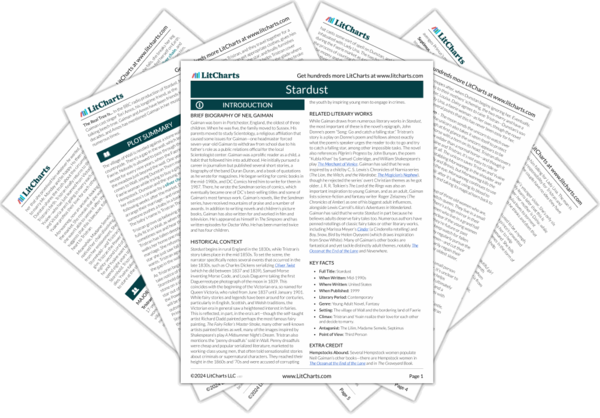While Gaiman draws from numerous literary works in
Stardust, the most important of these is the novel’s epigraph, John Donne’s poem “Song: Go and catch a falling star.” Tristran’s story is a play on Donne’s poem and follows almost exactly what the poem’s speaker urges the reader to do: to go and try to catch a falling star, among other impossible tasks. The novel also references
Pilgrim’s Progress by John Bunyan, the poem “Kubla Khan” by Samuel Coleridge, and William Shakespeare’s play
The Merchant of Venice. Gaiman has said that he was inspired by a child by C. S. Lewis’s Chronicles of Narnia series (
The Lion, the Witch, and the Wardrobe;
The Magician’s Nephew), though he rejected the series’ overt Christian themes as he got older. J. R. R. Tolkien’s
The Lord of the Rings was also an important inspiration to young Gaiman, and as an adult, Gaiman lists science-fiction and fantasy writer Roger Zelazney (
The Chronicles of Amber) as one of his biggest adult influences, alongside Lewis Carroll’s
Alice’s Adventures in Wonderland. Gaiman has said that he wrote
Stardust in part because he believes adults deserve fairy tales too. Numerous authors have penned retellings of classic fairy tales or other literary works, including Marissa Meyer’s
Cinder (a Cinderella retelling) and
Boy, Snow, Bird by Helen Oyeyemi (which draws inspiration from Snow White). Many of Gaiman’s other books are fantastical and yet tackle distinctly adult themes, notably
The Ocean at the End of the Lane and
Neverwhere.
